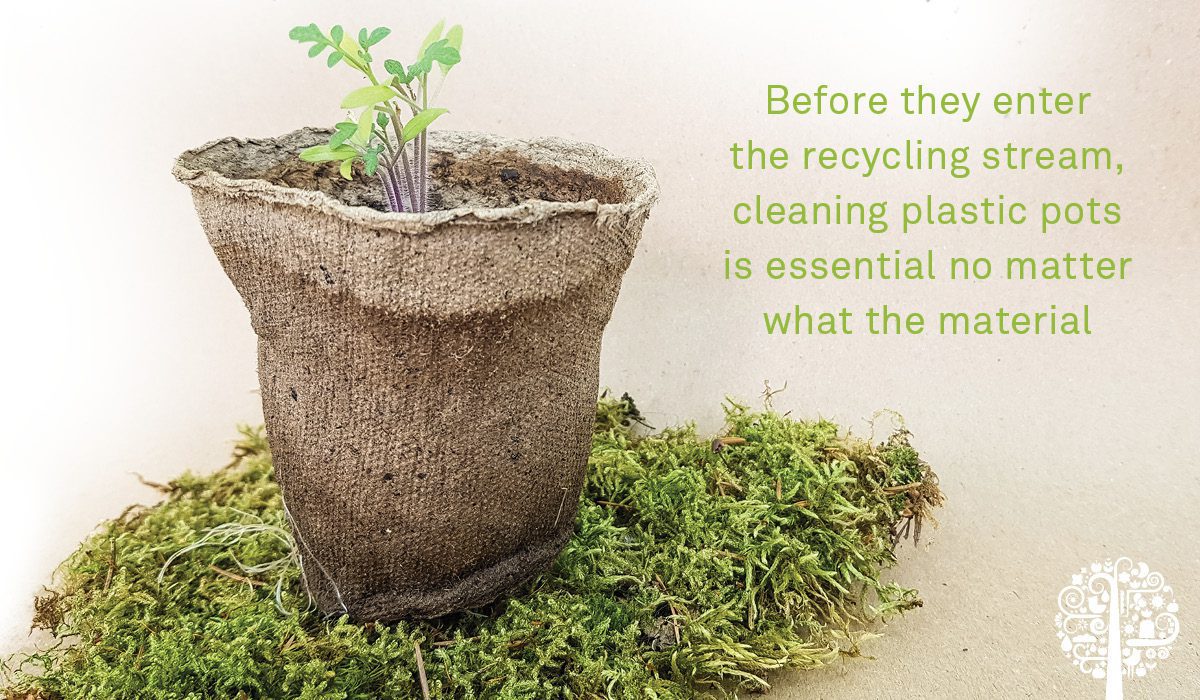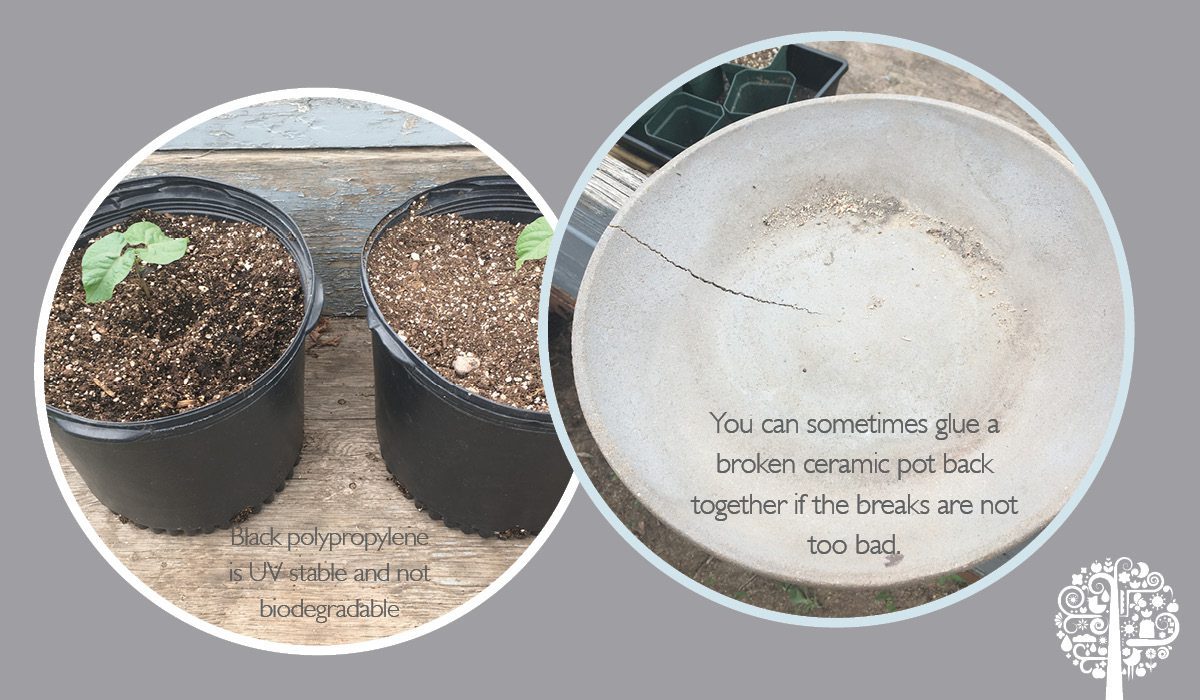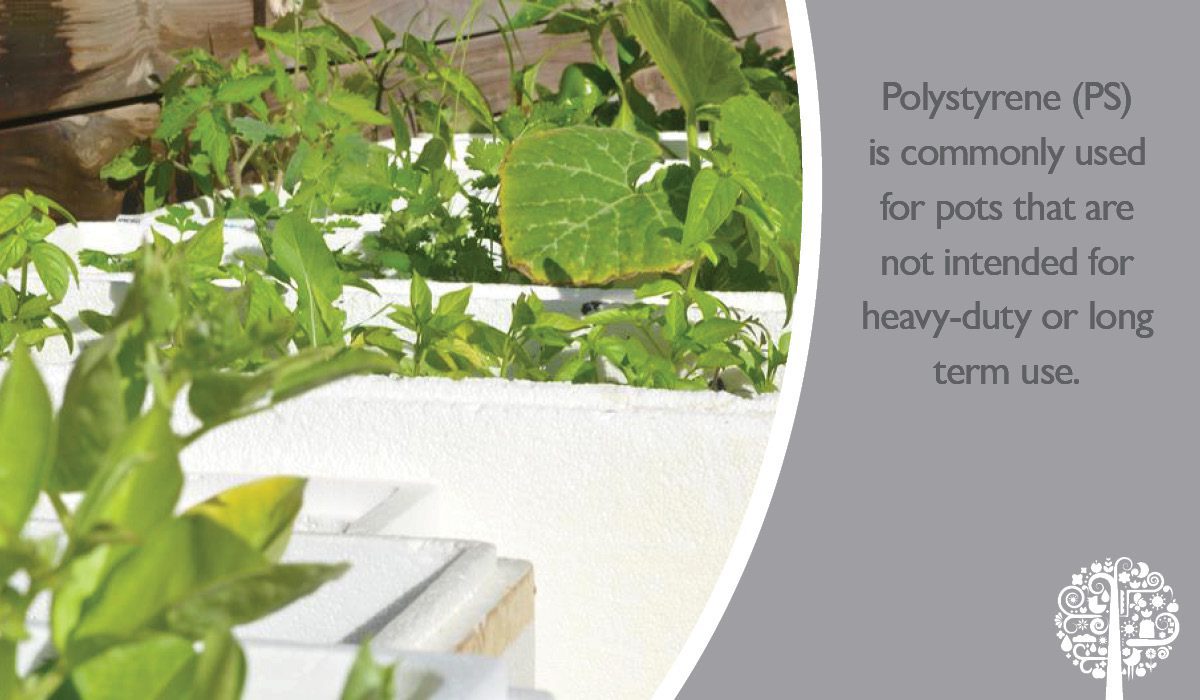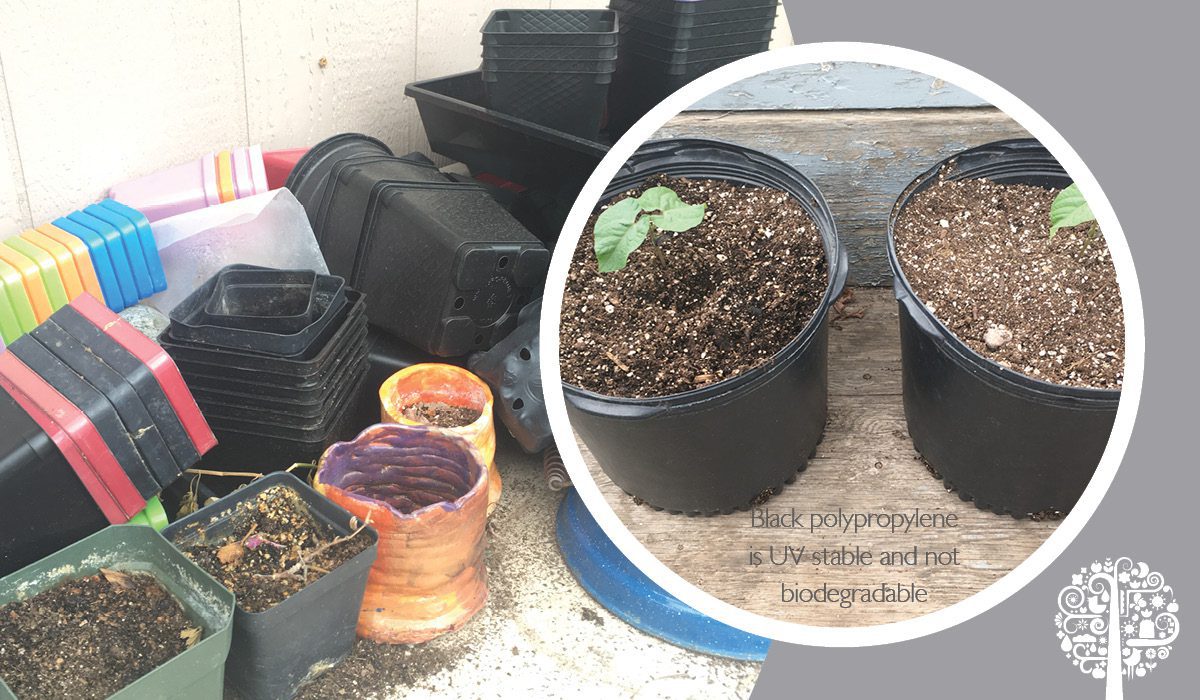Container gardening is on the rise, especially in cities where space is limited. Some containers are durable, but they don’t last forever. Eventually, you’ll end up with pots that are broken and can no longer be used. What to do with them? Unless you repurpose them into yard art, you have only two choices— the landfill or recycling. Which way you go depends on the material the pots are made of and their condition.
Ceramics
Ceramics like terra cotta are shaped and fired mineral products. Clay pots are among the most durable of planters; some ceramics that are thousands of years old have been found in decent condition, but yours probably won’t last that long. Ceramic pots come in various forms and colors, making them popular for specimen plants or in decorative applications.

You can sometimes glue a broken ceramic pot back together if the breaks are not too bad. Some people break up damaged crockery and use it as an aggregate added to the bottom of a container for drainage. Other than that, a broken pot has no place to go but the landfill. Porcelain, clay, and cement are not biodegradable. Hempcrete doesn’t take exposure to water well, but it is biodegradable, so it can be used for planters not expected to last more than a season or two.
Polystyrene
Polystyrene (PS) is commonly used for pots that are not intended for heavy-duty or long-term use. Polystyrene pots are inexpensive, lightweight, and identified by the number 6 inside the recycling symbol, usually found on the bottom of the pot. Alternatively, instead of the number, it may have the initials “PS.”

You don’t generally get a lot of size, shape, or color choices with polystyrene. Polystyrene pots are thin, mechanically weak, and highly flexible—it’s easy to get plants out of them when transplanting. They are great for starting seeds or cuttings but typically fail after a year or two of hard use by splitting down the sides.
Clear PS degrades in ultraviolet (UV) light and oxygen, but black formulations are more resistant to UV degradation and can persist in the environment for a long time. Degraded PS is quite friable (easily broken into small pieces) and contributes to micro-plastics pollution. Polystyrene is not biodegradable but can be recycled onto low-grade products such as styrofoam cups, food containers, and more plastic pots. If your PS pots are badly degraded and coming apart, it is probably best to bag them and throw them out. Recycle ones that are still mostly in one piece, but rinse them out first to remove adhering substrate.

Some municipal and commercial recyclers take plant pots, while others specifically ban them because of cleanliness issues. Dirt is hard on recycling machines. If you want to do it right, run a brush around the inside of pots before recycling to be kind to the equipment. Before they enter the recycling stream, cleaning plastic pots is essential no matter what the material.
Polypropylene
One of the most popular and durable plastics used in horticulture is polypropylene (PP). You will know it by the number 5 in the recycling symbol or the letters “PP.” Polypropylene pots come in all sizes and shapes, and because of the greater rigidity, PP is used to make large planters holding up to 170 liters (50 gallons) or more. Even thin PP pots will last much longer than ones made from PS. Black polypropylene is UV stable and not biodegradable, but it is recyclable into fiber, plasticware, industrial products, and more plastic pots. Overall, it’s a good choice because of its longevity and the many waste streams that accept PP for recycling.

Fiberglass
Decorative fiberglass pots last a long time and are hard to break. Recyclable? Definitely not. The trash bin or garage sale are about your only options.
Grow Bags
Cloth or fiber-based bags are available for use as planters. Since they are gas permeable, they tend to dry out faster than other containers but provide good aeration. They are lightweight, flexible, and easy to store. The ones with handles make moving heavy plants a little easier. They are usually made out of non-woven, felt-like material—often polypropylene. They tend to last a long time, too (years). Not recyclable, though, even if they are polypropylene because they are hard to clean and will jam up the machinery when shredded.
Organic Containers
You can put pots made from peat, coir, or other natural materials right into the ground or the compost pile.